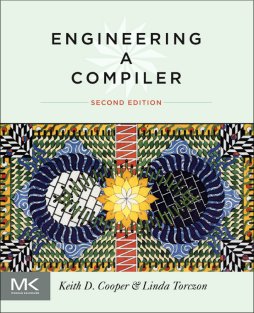
Additional Information
Book Details
Abstract
This entirely revised second edition of Engineering a Compiler is full of technical updates and new material covering the latest developments in compiler technology. In this comprehensive text you will learn important techniques for constructing a modern compiler. Leading educators and researchers Keith Cooper and Linda Torczon combine basic principles with pragmatic insights from their experience building state-of-the-art compilers. They will help you fully understand important techniques such as compilation of imperative and object-oriented languages, construction of static single assignment forms, instruction scheduling, and graph-coloring register allocation.
"Keith Cooper and Linda Torczon are leading compilers researchers who have also built several state-of-the-art compilers. This book adeptly spans both worlds, by explaining both time-tested techniques and new algorithms, and by providing practical advice on engineering and constructing a compiler. Engineering a Compiler is a rich survey and exposition of the important techniques necessary to build a modern compiler."--Jim Larus, Microsoft Research
"The book is well written, and well supported with diagrams, tables, and illustrative examples. It is a suitable textbook for use in a compilers course at the undergraduate or graduate level, where the primary focus of the course is code optimization."--ACM’s Computing Reviews.com
"This book is a wealth of useful information, prepared didactically, with many helpful hints, historical indications, and suggestions for further reading. It is a helpful working book for undergraduate and intermediate-level students, written by authors with an excellent professional and teaching background. An engineer will use the book as a general reference. For special topics, an ambitious reader will consult more recent publications in the subject area."--ACM’s Computing Reviews.com
